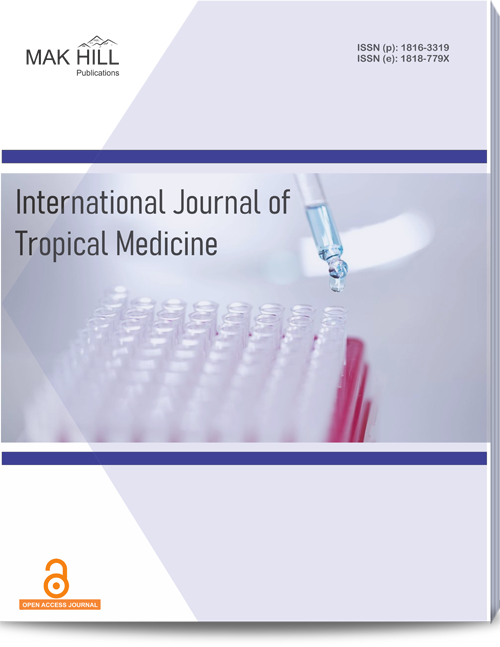
International Journal of Tropical Medicine
ISSN: Online 1818-779XISSN: Print 1816-3319
Abstract
In particular in the tropics, snake biting is a serious public health issue that significantly increases morbidity and mortality worldwide. One of the most severe aftereffects of a snake bite and a substantial cause of death is acute kidney damage (AKI). For the best clinical care, the species of snake that bit the patient must be identified. Early anti‐snake venom (ASV) administration combined with the right supportive measures can reduce fatalities. Over the course of a year, the aforementioned study was carried out at the GMC JAMMU Postgraduate Department of Medicine. The study comprised 100 adult cases of hemotoxic snakebiterelated AKI that were admitted to the medical emergency department. All of these patients received ASV in accordance with the National Snakebite Protocol and patients were followed up on for any changes in ASV dosage needs based on their unique clinical profiles. Majority of subjects were within 30‐60 years of age group (59%). In maximum subjects lower limb was having hemotoxic snake bite (83%). The most common clinical presentation was limb swelling/cellulitis (90%). The 48 subjects required Hemodialysis and 4 patients given Peritoneal Dialysis. 88 subjects survived after treatment. A typical systemic outcome of snake envenomation is acute kidney injury (AKI), which can occur directly or indirectly. AKI is early diagnosed with careful fluid balance monitoring and renal function testing. It is expected that SAKI‐related mortality and morbidity will decrease if anti‐venom medication and supportive care are initiated as soon as possible.
How to cite this article:
Sanju Nazar, Prabhat Singh and J. B. Singh. Evaluate the Clinical Profile and Outcome of Patients of Acute Kidney Injury Due to Hemotoxic Snake Bite Envenomation.
DOI: https://doi.org/10.36478/10.59218/makijtm.2023.68.73
URL: https://www.makhillpublications.co/view-article/1816-3319/10.59218/makijtm.2023.68.73